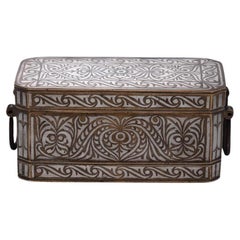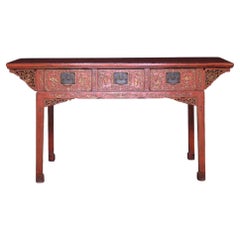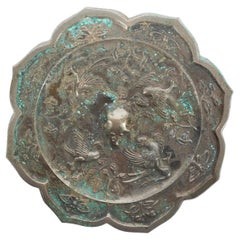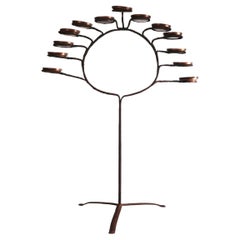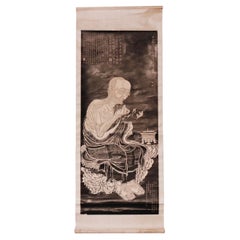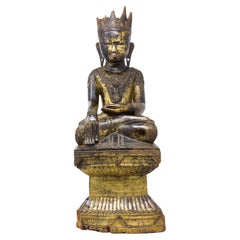Palm Springs - Asian Art and Furniture
Early 20th Century Philippine Tribal Palm Springs - Asian Art and Furniture
Silver, Bronze
19th Century Chinese Qing Antique Palm Springs - Asian Art and Furniture
Wood, Lacquer
15th Century and Earlier Chinese Tang Antique Palm Springs - Asian Art and Furniture
Bronze
Early 1800s Japanese Edo Antique Palm Springs - Asian Art and Furniture
Copper, Iron
19th Century Chinese Qing Antique Palm Springs - Asian Art and Furniture
Paper
Late 18th Century Burmese Other Antique Palm Springs - Asian Art and Furniture
Gold Leaf
20th Century Indonesian Other Palm Springs - Asian Art and Furniture
Cotton
20th Century Indonesian Tribal Palm Springs - Asian Art and Furniture
Silk
Early 20th Century Japanese Meiji Palm Springs - Asian Art and Furniture
Silk
15th Century and Earlier Thai Tribal Antique Palm Springs - Asian Art and Furniture
Ceramic
15th Century and Earlier Thai Tribal Antique Palm Springs - Asian Art and Furniture
Ceramic
Early 1800s Japanese Edo Antique Palm Springs - Asian Art and Furniture
Wood
15th Century and Earlier Thai Folk Art Antique Palm Springs - Asian Art and Furniture
Ceramic
Late 19th Century Japanese Meiji Antique Palm Springs - Asian Art and Furniture
Bamboo, Rosewood
Late 19th Century Chinese Qing Antique Palm Springs - Asian Art and Furniture
Wood, Lacquer
Late 19th Century Thai Other Antique Palm Springs - Asian Art and Furniture
Mother-of-Pearl
Early 1900s Japanese Meiji Antique Palm Springs - Asian Art and Furniture
Rosewood
15th Century and Earlier Thai Tribal Antique Palm Springs - Asian Art and Furniture
Ceramic
15th Century and Earlier Thai Other Antique Palm Springs - Asian Art and Furniture
Ceramic
1890s Japanese Antique Palm Springs - Asian Art and Furniture
Porcelain
Mid-19th Century Chinese Qing Antique Palm Springs - Asian Art and Furniture
Wood
15th Century and Earlier Thai Tribal Antique Palm Springs - Asian Art and Furniture
Ceramic
19th Century Thai Other Antique Palm Springs - Asian Art and Furniture
Bronze
19th Century Laotian Tribal Antique Palm Springs - Asian Art and Furniture
Clay
17th Century Japanese Edo Antique Palm Springs - Asian Art and Furniture
Wood
1980s Japanese International Style Vintage Palm Springs - Asian Art and Furniture
Paper
15th Century and Earlier Japanese Other Antique Palm Springs - Asian Art and Furniture
Bronze
Early 20th Century Burmese Other Palm Springs - Asian Art and Furniture
Wood, Lacquer
Early 20th Century Indonesian Tribal Palm Springs - Asian Art and Furniture
Silk
19th Century Japanese Meiji Antique Palm Springs - Asian Art and Furniture
Paper
1890s Japanese Antique Palm Springs - Asian Art and Furniture
Porcelain
Early 20th Century Philippine Tribal Palm Springs - Asian Art and Furniture
Silver, Brass
Early 20th Century Japanese Palm Springs - Asian Art and Furniture
Bronze
20th Century Chinese Palm Springs - Asian Art and Furniture
Ceramic
Early 20th Century Chinese Palm Springs - Asian Art and Furniture
20th Century Japanese Palm Springs - Asian Art and Furniture
Bronze
Read More
Symbols of Happiness and Rebirth Adorn This Japanese Satsuma Bowl
Decorated with white cranes and the sought-after thousand-butterflies motif, the Meiji-period vessel offers both a celebration of traditional aesthetics and a clear reflection of the era’s appetite for exquisite export pieces.
Chicago’s Pagoda Red Has a Spirited Mix of Asian Antiques and Bold New Art
For 25 years, gallerist Betsy Nathan has leveraged her keen eye and key connections to bring a unique selection of rare finds to the market.
In L.A., Gallerist JF Chen Has Long Championed Eclectic Blue-Chip Design
Now working alongside his daughter Bianca, dealer Joel Chen has presented a most covetable array of antiques, art and contemporary creations for more than 40 years.
12 Calming Spaces Inspired by Japanese Design
From cherry-blossom-adorned walls paired with glamorous lighting to wood-paneled ceilings above checkerboard-patterned chairs, these 12 spaces seamlessly blend Eastern and Western aesthetics.
Rodrigo Rivero Lake’s Mexico City Showroom Is a Museum-Worthy Trove of Spanish Colonial and Asian Antiques
The dealer and curator has spent the past 50 years amassing a collection of exceptional art, furniture and architectural elements that trace the cultural influence of the Spanish empire from Europe to the Americas and beyond.
16 Refined Asian-Inspired Interiors
These spaces exemplify how Eastern elements elevate a home's decor.
